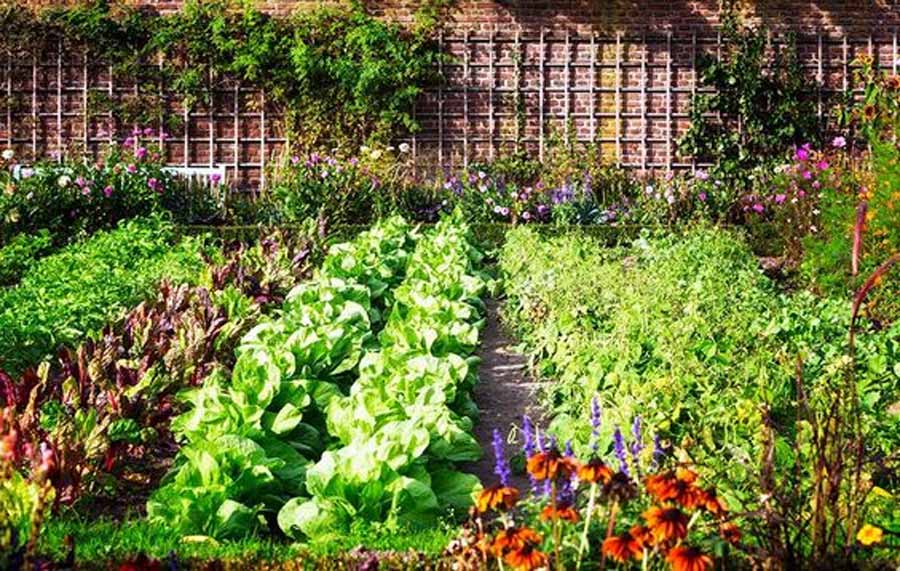January Greenery- Gardening Magic for your Home
January marks the beginning of an intriguing new year in the garden. The temperatures may be frigid, but is able to observe the first indications of spring outside, with tulips popping up out of the soil and the hours of daylight becoming a little longer.
Indoors, there are seedlings to sow, and January is an excellent month for planting bare-root tree and shrub seeds. The time has come to prepare for another successful year of gardening.
Table of Contents
Different Weather in North & South India:

From a variety of fruits and green leafy vegetables that are grown in the cold season of January, we’ll tell you which plants you may add to your terrace or backyard to bring new shades of leafy green and other hues.
Spinach :
Spinach seedlings are frequently sown in cold weather, particularly in December and January. The crop, which is high in antioxidants, iron and full of vitamin in combination and nutrients, is easy to grow and may be produced in 45-60 days. One may plant spinach seeds during the chilly days of January. These lush green leaves provide numerous health advantages.
Lettuce:
Harvest the outermost leaves of lettuce on an ongoing schedule to ensure continuing development. Keep the soil continually moist when producing lettuce from seed. Lettuce is a rapid salad crop that can be produced within a few weeks of sowing. These healthy leaves are simple to cultivate and like milder weather. The optimal time to sow these greens is around the end of December or the beginning of January.
Radish:
Radish is additional winter vegetable that may be grown at home in January and used in dishes such as salads, soups, and the parathas. The roots of the plant develop faster in cold weather and require sandy soil to spread and blanket the area around it. One may either sow seeds or cut the leaves off some radish and plant them in soil. The crop will be available in 22-70 days, and it will be delighted to eat salad straight from the garden.
Peas:
Peas can be grown at home even in the hard January cold. Everything one needs to do is plant every pea an inch deep and no less than a couple of inches apart. At first, the plants will need a lot of fertilizer and plenty of water. Wrap the entire surface with a small net to prevent birds from picking the sprouted plants. The crop will be available in March, and then you can expect to eat homegrown peas that have been grown green.
Capsicum:
If you are an avid gardener, you are aware that capsicum flourishes in cold temperatures. Seeds for this veggie can be planted early in January. You are going to have a crop in two months, which is rich in vitamins C, E, and A. When sowing capsicum seeds, make sure they are 2-4 inches wide. You must also remember to take precautions to maintain insects from attacking the plants, as capsicums are vulnerable to insect harm.
Oranges:
January is the greatest month to cultivate oranges in the backyard since it is associated with the brilliant colors of citrus fruits. They provide vitamin C, and the tree flourishes in India’s chilly winter weather. While planting orange trees in soil that drains well you can enjoy picking your own luscious, sun-kissed oranges.
Guavas:
Guavas are known as delicious sweet fruits, so they’re a perfect addition to the January garden. These kinds of trees flourish in warm areas of India. The guava plant needs a fertile environment and plenty of sunshine; in just a few months, one can enjoy the delicious flavor of native guavas.
Strawberries:
The crimson and tasty strawberries are a lovely addition to winter gardening. This is the ideal berry to cultivate or plant during the month of January in India. Berries are ideal for containers, hanging containers, or grow bags, and are reasonably straightforward to grow. Plant seeds or start seedlings in January, and one will soon relish the delectable natural sweetness of these little treats.
Pears:
Pears are noted for their crispy appearance and sweet flavor and they flourish in Indian gardens. Select pear kinds that are appropriate for the region in question, grow them in fertile ground, and allow sunlight throughout the day. One can get the thrill of collecting fresh pears from your individual trees rapidly.
Fig:
Around India, figs, which are noted for their flavorful and luscious fruits, bloom best around January. Though ripening requires time, the benefits are worth waiting for them. Fig trees demand soil that drains well and provide the distinct flavor of freshly picked figs in their own garden.
Papaya:
In India, papaya can be planted early in the spring and is ready to harvest in January. Plant the seeds of papaya in soil that is well-drained, and in just a few months.
Broccoli:
Broccoli is a vegetable that grows in January and flourishes in lower temperatures, making it suitable for winter gardens. Sow the seeds of broccoli in fertile soil and water them routinely. Cut the primary head after a couple of months, then savor the side branches as they grow.
Cauliflower:
Cauliflower, a cool-season vegetable, develops best in January. Cauliflower can be planted in containers or grow bags, and soil that is rich in nutrients is recommended for optimal development. The optimal time for gathering those small heads is while the heads are remaining firm and white.
Conclusion:
There are many vegetables and fruits one can sow in this January month and enjoy the delicacies in the later months of the Year.
















































